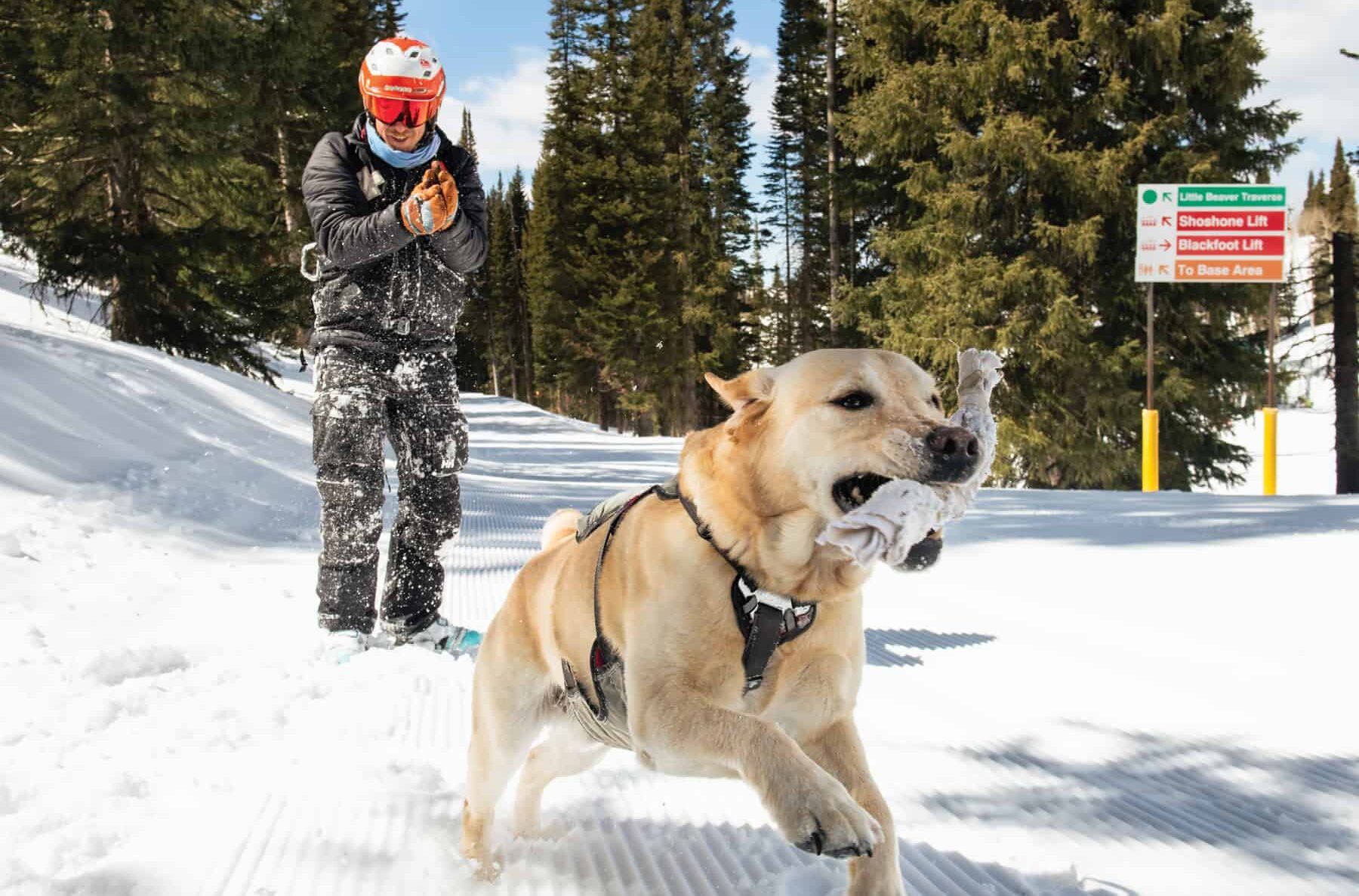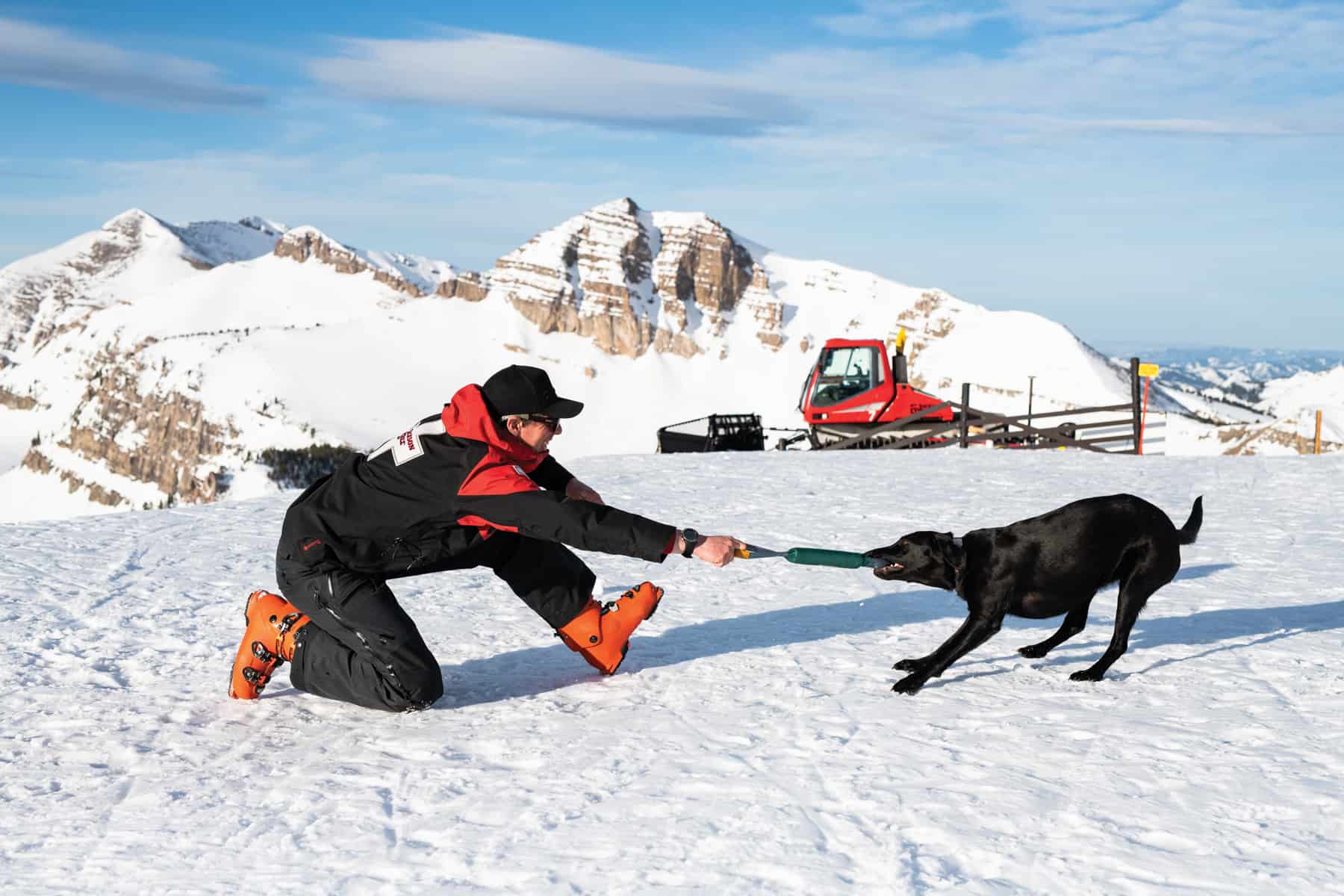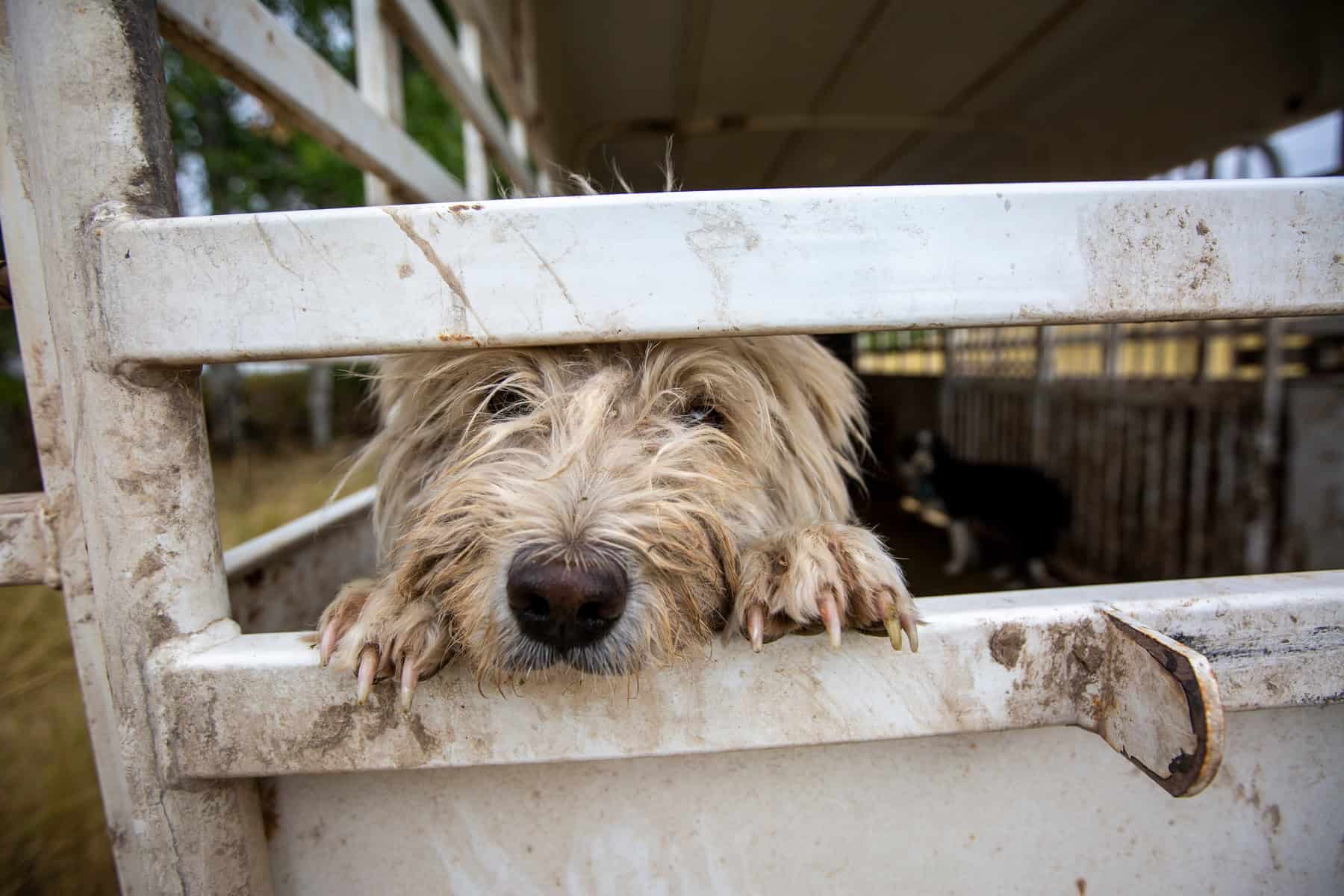By Deb Barracato // Photography by Katie Cooney
—
Ski patrollers, even the seasoned ones, spend countless hours training every winter, honing their avalanche rescue and emergency medical expertise, equipment mastery, crowd control abilities, and customer service skills: often, in sketchy terrain and challenging weather conditions. They almost never do it for the pay. Why would some voluntarily, even enthusiastically, embrace an opportunity to add even more to their plate?
Well, for the dogs, of course.
The avalanche dogs at Grand Targhee Resort and Jackson Hole Mountain Resort (JHMR) inspire otherwise normal humans to put forth in a superhuman way. Becoming a K9 ski patrol team requires next-level commitment from both the dog and their person. On average, being validated—or certified to perform in an actual rescue—takes two years, and most dogs remain active for eight to ten years. Some teams accomplish validation with just one season of on-snow training, although getting there faster doesn’t necessarily make a dog better or more skilled in the long run, says Daniel Nagy, the human part of a Targhee K9 team which includes Tele, his dog. Most teams start training when a dog is about six to twelve months old, and aspiring handlers typically spend a year shadowing a mentor before they even begin to work with their dog, beyond general obedience training.


Nagy and Tele started a little later than usual, but still validated during their second season over the winter of 2020 and 2021. Tele was a rescue and mixed breed, and while Nagy hoped she would have the right disposition for the job, he didn’t know how she would respond. He explained that many handlers choose a dog breed for particular traits conducive to avalanche training. It took a little longer to develop a bond with Tele, he said, but once they started doing rescue-specific training, she quickly showed the aptitude and willingness he needed to build the relationship.
“I spend more time with my dog than my wife in the winter,” he says.

Bill Vore, the dog program coordinator at JHMR, says most dogs validate at age 2, though Cache, a Dutch Shepherd handled by Chris Brindisi, notably validated when she was one. She is the second dog raised by Brindisi, and the two share a particularly strong bond, Vore explains. If a team doesn’t validate by the time a dog reaches the age of 3, they start to question whether it’s the right dog. With one dog recently retired, another potentially sitting out the season with a handler taking leave, and a third that passed away unexpectedly, the JHMR team is in a bit of a rebuilding phase, much like a high-school football team that loses players to graduation.
The dogs go to work every day with their handlers, and ideally, there will be four on the mountain at all times at JHMR, and at least two on duty at Targhee. The workday looks a little different for the canine half of the teams; the dogs spend much of their time relaxing on sofas in the patrol shacks, while their handlers perform regular duties on the slopes. (The dogs lounge on furniture not because they’re spoiled, but because getting a paw crushed by a ski boot could end a season, and possibly, a career.) And while the humans come to work, the dogs actually come to play.
MEET THE TEAM: JACKSON HOLE MOUNTAIN RESORT
The training techniques, used by the Canadian Avalanche Rescue Dog Association (CARDA) and the Colorado Rapid Avalanche Deployment (CRAD) programs, turn every rescue exercise into a game of hide and seek. When dogs respond appropriately to the protocol-specific commands, they’re rewarded with an energetic game of tug using a favorite toy. A special red vest signifies when the fun/work begins. The dogs wear these when they ride the lift, participate in dedicated training exercises, and go on a rescue operation. They move about the mountain often on the shoulders of their handlers, which keeps them out of deep snow and reduces wear and tear on their joints.
Even with the most advanced man-made technology—digital transceivers, backpacks equipped with airbags—and improved awareness among those who ski and ride in the backcountry, a trained search dog with a skilled handler often leads to better outcomes during a rescue. Equipment can fail, and in the rare but still possible case of an in-bounds slide (it’s happened at both Targhee and JHMR), potential victims would unlikely have transceivers. With a nose that can sniff out a particular scent in a concentration of one part per trillion—the equivalent of a single drop of food coloring in 500,000 barrels of liquid—the olfactory power of one dog can make short work of a job that might require hours, or even days, of effort by human patrollers with probes. A buried victim can survive with an air pocket (in the early 90s, an off-duty JHMR ski instructor survived for 90 minutes before a search dog located him), but it’s always a race against time.


Understanding how much more effective she can be in a rescue situation with her dog Sable fuels JHMR patroller Shannon Brown’s commitment. In training exercises, Sable, an eight-year veteran on the verge of retirement, still dependably finds items buried deep in the snow, Brown explains. “It’s astounding what she can find, even after days and a big storm.”
When a search switches from rescue to recovery, time still matters. A dog’s ability to zero in on a victim’s location in minutes vastly reduces the amount of time rescuers spend in dangerous conditions. It also achieves closure more quickly for a victim’s friends and family. And in the event of an avalanche with no reported victims, a trained dog can clear the scene with much greater efficiency than a human probe line, confidentially confirming that no one got trapped under the snow. In the rare occurrence of an in-bounds avalanche, having the highly trained dogs on site makes it possible for the team to respond effectively without moving every available patroller to the scene and leaving the rest of the mountain without coverage.
On average, being validated—or certified to perform in an actual rescue—takes two years, and most dogs remain active for eight to ten years.”
To be effective, a handler must make each encounter related to rescue work positive, rewarding every successfully completed training exercise, rescue, or recovery with that special game of tug. In a real scenario, which might involve a death, the search must still end with a celebration. For the dogs, it’s the ultimate reward for good performance. It can be emotionally challenging for a handler to follow through on this, especially with grieving survivors on the scene, but they know the reward must be delivered consistently to reinforce the desired behavior.
MEET THE TEAM: GRAND TARGHEE
“Patience is a big key,” explains Casey O’Connor, Grand Targhee’s K9 program director and handler to Mikko, a 6-year-old yellow lab and veteran on the team. “If you make a mistake in your discipline, it can take months to come back.”
The repetition and consistency in the extensive training really involves the entire patrol, including even those who don’t work directly with a dog. Everyone participates at some level, O’Connor explains, supporting training exercises, transferring dogs to their handlers on the mountain, and learning enough about the protocol to reinforce the work being done. As Vore explains, you always fall back to your lowest level of training in the extremely stressful environment of a rescue. So, that training must be rock solid.

While both JHMR and Grand Targhee provide some financial and material support to the avalanche dogs, they are nonprofit programs, with the patrollers raising a significant portion of the necessary funding through business sponsorships, merchandise sales, and public events. The K9 teams contribute their resources and expertise to the search and rescue organizations in both Teton counties as well.
At Targhee, the dogs and their handlers conduct demonstrations on Sundays at the top of the Sacajawea lift. The handlers all say they like it when people ask to meet and pet their dogs. Because, despite the seriousness of the job and the intensity of the relationship with their handler, at the end of the day, the dogs turn back into beloved pets, spreading the same joy to their other family members.













